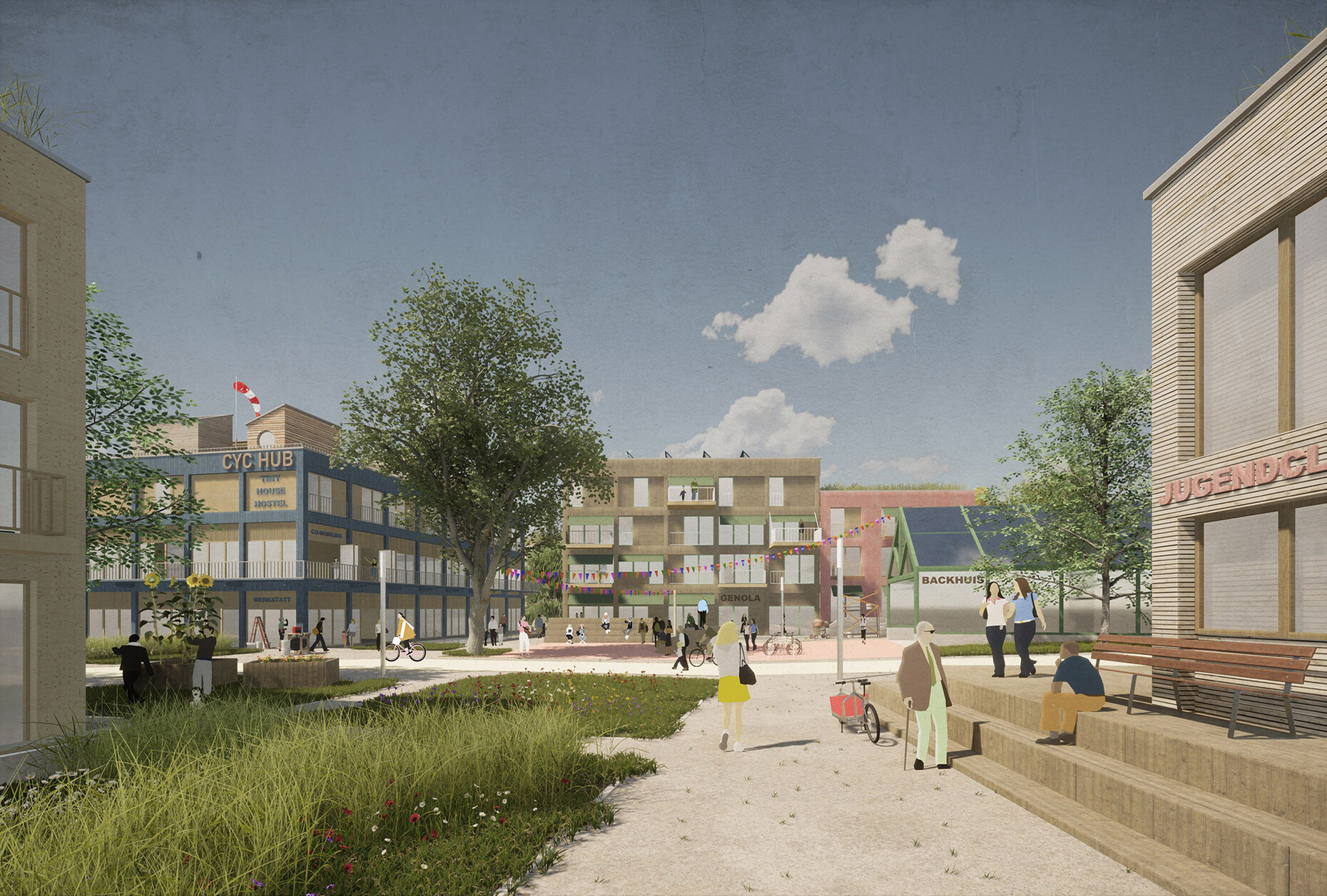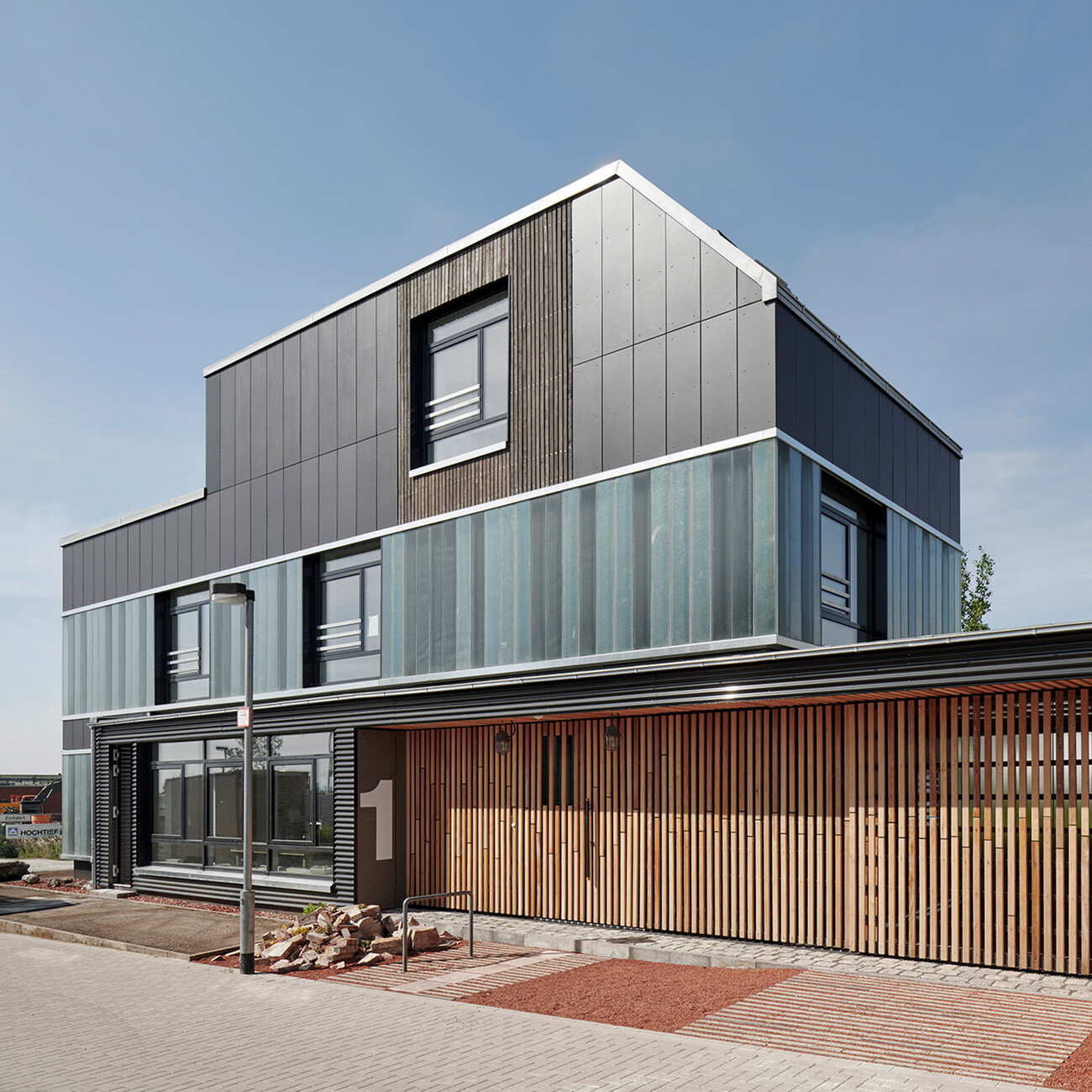Shades of grey preferred
Cityförster see themselves as designers of urban (intermediate) space. The internationally active and interdisciplinary partnership of architects, engineers and urban planners was founded in 2005. In the spirit of sustainable living and working, the Ecovillage is currently being built in Hanover - which will offer 500 flats on five hectares of land with open spaces that can be used in a variety of ways. Construction on the project, to which Cityförster contributed the master plan as well as a built object, is scheduled to start in 2022.
Linda Pezzei: How did the Cityförster office come about?
Oliver Seidel: Cityförster was created during the training at the university. We had already formed a group in 2004 that wanted to get to the bottom of the question of what the architecture of the future should look like. In our opinion, there was little progressive thinking at the university at the time, so we started organising exhibitions and conferences on our own. Eventually, 11 partners formed an alliance that was to be maintained in the future. On the very day of our final thesis presentation, we got an assignment in Albania. Fortunately, the Faculty of Architecture and Landscape at the Leibniz University of Hanover provided us with a room to work in without further ado. This marked the birth of our office.
What makes Cityförster different in planning and design - and compared to competitors?
Oliver Seidel: Our holistic approach is very distinctive. For us, all disciplines are important and we always strive to think everything through from the beginning. Our motto is to start big and only then bundle and focus all ideas. Our thinking has a natural acceptance of the complexity of things. We do not look for black-and-white solutions, but prefer the shades of grey. We like to develop ideas for the built environment from the landscape. Where we were ridiculed in the beginning, our way of thinking is now more relevant than ever. We also try to help public administrations implement innovative projects. Strong arguments can have a lasting influence on policy.
What do you see as the advantages of your interdisciplinary and international way of working?
Oliver Seidel: Respectful communication on a par is enormously important to us. This applies to our dealings with citizens, clients and politicians as well as to our collaboration with other planners and all team members at Cityförster. Due to our many years of international work, we are also familiar with other countries and "customs". Situational, flexible work is therefore our daily business. In this way, you quickly learn to think and act creatively and without bias. That is one of our great strengths.
You specialise in strategic planning, international development projects and experimental, resource- and recycling-friendly construction - what are the challenges of our time?
Oliver Seidel: Strategic thinking is enormously important for future-oriented urban development. After all, we have to plan today for the future. This means that our planning must be able to react to events that are not yet foreseeable. It is therefore enormously important for us to define guiding principles, strategies, tools and overarching structures that define the long-term orientation of urban developments. For example, we show approaches to how the housing estates of the 1950s, 1960s and 1970s can be energetically and socially rebuilt or expanded, without immediately listing everything in detail. Or we define important open space networks that permanently supply the city with fresh air, promote biodiversity, take on important sponge city tasks and at the same time offer open spaces for young and old that can be used in a variety of ways. In all of this, we make sure that the change processes are communicated in a way that is easy to understand and that the citizens are involved in the decision-making process. This strategic way of thinking also helps us to develop different types of buildings, such as the Recycling House. In the case of this building made of used construction elements and materials, the "ingredients" available to us were not even known at the planning stage. What we used only gradually emerged from the available resources. This is exciting, but it also requires an underlying strategy: How do the material cycles work? Which construction methods can also be dismantled and recycled again according to type? How well can the future occupants take ownership of the building? And what aesthetic principles are important to us? Of course, all of this requires a great deal of openness on the part of the client.
How do you see the new working world? Where are the challenges, where do you see opportunities?
Oliver Seidel: In my eyes, the working world is to be understood as a diversely designed "landscape" that enables and triggers different ways of working, but also leaves an openness for new things. There is not only space for concentrated individual work or the hustle and bustle of a workshop, but it is precisely the transitions with their shades of grey that define the quality of these spaces. The pandemic has once again fuelled the change in working environments and made it more complex. More than ever, we have to think about how work, living and leisure can be better combined. Here, too, our credo is: flexibility without leaving everything too open. Living and working - yes, but it can't be that in the future everyone sits alone in the kitchen and the flat becomes an office. In urban development, we are therefore currently developing the external home office. These are places of work close to the home, but also places where people can meet. As in all our projects, we think that the overlapping and interweaving of uses with the greatest possible flexibility and also a dash of improvisation – call it a "general shop" – are the key to success.
What are the (structural) prerequisites for sustainable tourism?
Oliver Seidel: Ideally, the buildings should be designed in a climate-positive way and integrate into the place without negative effects. In addition, we always try to involve local people – and not just as menial labourers. We focus on economic as well as social synergies. In our projects in Albania, for example, this is a very important approach: here a poor rural population meets relatively rich guests from home and abroad. Interlinking is absolutely necessary here. NGOs and local politicians are easy to win over, but convincing investors is often much more difficult. A sensitive approach to the existing landscape is also very important to us. We prefer to use existing structures and optimise them rather than building from scratch.
Do public spaces get the attention they deserve? In your opinion, which region can serve as a role model?
Oliver Seidel: In Germany, I still see a lot of room for improvement here. In my opinion, we first have to get the cars out of the cities and rely much more on the bicycle, footpaths or public transport. Copenhagen is a real role model in this respect. Since the 1980s, this formerly industrial and economically struggling city has been transformed into one of the most liveable places in Europe. Politics has made a very big contribution in this process through decisions that have been effective in the long term. I see major deficits here in Germany. We often think in the short term – only until the next election – and good ideas and projects die. Freiburg im Breisgau certainly represents a ray of hope with regard to sustainable urban development. Here, effective long-term strategies and plans are being developed and successively implemented.
An innovative mobility concept that you have realised - or would still like to realise?
Oliver Seidel: I find the topic of mobility nodes and their integration into urban life, their usability as well as their design very exciting. It doesn't matter whether it's the change from tram to bike, from car to train or from e-scooter to footpath. For us, the development of these places is an essential part of the transport revolution. Because only if the transfer is characterised by positive experiences will we get people to leave their cars behind. To do this, we have to design these so-called MobilityHubs as well as possible so that people feel comfortable and safe. We have to charge them functionally, i.e. combine them with leisure facilities, workplaces, social facilities and thus create lively places. And we have to make sure that the transfer processes are as simple as possible. In terms of urban planning, we have already planned these MobilityHubs several times and now hope to be able to implement such a place in the near future.
A place that (lastingly) inspires you and why?
Oliver Seidel: That brings me back to Copenhagen. The diversity of use and design quality of the public space are simply enormous. The smooth mobility and the overlapping of functions are unique. Playgrounds, for example, not only benefit children and young people, but they also serve as retention areas during heavy rainfall. All in all, the interconnection of topics such as mobility, environment or social issues in combination with a high-quality design is extraordinary at this location. Where many aspects are otherwise thought of and dealt with separately, Copenhagen offers a coherent, interlocking work of art.


















